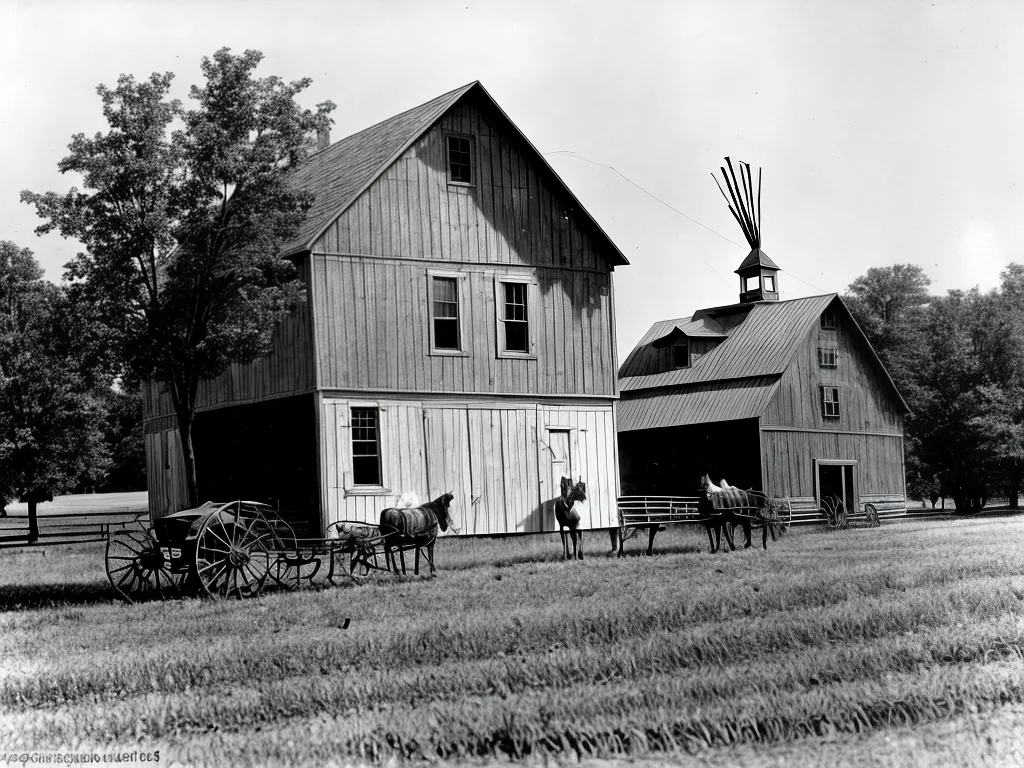
Introduction
The Amish relationship with technology has always been complex. On one hand, they seek to live simple, agrarian lives free of modern conveniences. On the other hand, they recognize the need to adapt and utilize some innovations for safety, business purposes, and connection with the outside world. This delicate balance is exemplified in their history with the telephone.
I found this aspect of Amish history fascinating. As an outsider looking in, I wanted to understand how and why the Amish overcame their initial objections to adopt this technology to a limited extent. In this article, I will explore when telephones first appeared in Amish communities, how they were utilized and regulated, and the lasting impact these early decisions had on Amish life today.
The Origin of Telephones Among the Amish
The first telephones began popping up in Amish homes and businesses around the early 1900s. Prior to this, the Amish had avoided adopting many new technologies that emerged during the Industrial Revolution, such as electricity, automobiles, and radio communication. However, the telephone presented some unique advantages that aligned with Amish values:
-
Communication - Telephones allowed the Amish to more easily communicate with friends, family, and customers. This promoted kinship and community.
-
Business purposes - Phones enabled Amish business owners to conduct transactions with outside vendors and customers. This was crucial for their livelihood.
-
Safety - Telephones could be used to call for medical help, report fires, or warn of other dangers. This appealed to the Amish duty to protect their families and neighbors.
-
Connection to the outside world - Limited contact with non-Amish was deemed beneficial for business, legal, and educational purposes. Telephones facilitated this while still limiting exposure.
So while the telephone was not an absolute necessity, some Amish leaders permitted its adoption for specific uses under strict limitations.
How the Amish Adopted Telephones
In the early 20th century, public phone lines expanded into rural areas near Amish communities. Some Amish farmers allowed wires to be strung across their properties, connecting Amish homes to the public phone network. But there were restrictions:
Phone Booths in Homes and Businesses
-
Phones were confined to small phone booths or wooden boxes built into barns, workshops, or homes. This physically separated the phone from the rest of the Amish property.
-
Using the phone required deliberately stepping into the booth or box - a symbolic gesture to keep the technology from encroaching further into Amish life.
Community Phone Shacks
-
Some districts built simple shacks shared by the entire church congregation. A few phones inside allowed convenient access for the community.
-
Neighbors would take turns managing and operating the phone shack. This promoted cooperation.
Party Lines
-
Early telephones used party lines shared by multiple households. The Amish would collectively decide acceptable hours for phone use.
-
Party lines allowed monitoring of appropriate use within the community. An individual's phone usage was not private.
Phone Equipment Options
-
The earliest telephones were battery-powered to avoid electric wiring. Some operated without batteries by using a hand crank generator.
-
Mostservice was basic - no extra features like voicemail or conference calling that might encourage excessive use.
How Phone Use Was Regulated
Amish leaders created oral rules, or ordnungs, to govern telephone adoption in their church districts:
-
Limitations on Location - Phones could only be installed in certain community buildings or businesses, not private homes.
-
Restrictions on Usage - Phones could only be used for essential business or emergency purposes, not casual socializing. Calls were to be brief.
-
Shared Responsibility - Community members took turns operating and maintaining shared phone facilities like booths or shacks.
-
Ethical Communication - Callers were expected to maintain Amish standards of decorum - no foul language, inappropriate topics, or worldly attitude allowed.
-
Community Oversight - Bishops and deacons monitored phone use to ensure adherence to ordnungs. Inappropriate use was grounds for losing phone privileges.
-
Shunning of Individual Ownership - Privately-owned phones were prohibited. The technology remained communal.
These ordnungs varied between districts but reflected a balanced adoption of this new technology.
Lasting Impact on Amish Life
The early Amish rulings on telephone use set important precedents that impacted Amish relations with technology long-term:
-
They established methods for evaluating and regulating emerging technologies that are still followed by Amish bishops today. The principles of shared use, limited adoption, and ordnungs governance remain entrenched.
-
The telephone proved that cautious, restricted access to modern innovations could provide benefits without destroying core Amish values. This opened the door to limited use of certain technologies like power tools, calculators, and velcro fasteners.
-
Placing phones in community buildings reinforced the importance of public spaces where social bonds are formed. Amish continue to favor shared shops and sheds over private ownership.
-
Keeping phones out of homes prevented disruption to family life - a priority retained today. Home is kept separate from the modern world.
So the early telephone rulings paved the way for the selective and constrained, yet beneficial, use of technology that the Amish still practice today. Examining this history provides important lessons on how technology can be harnessed without losing sight of core values.
Conclusion
The Amish approach to adopting the telephone in the early 20th century provides fascinating insight into their values. It dispels the myth that they are simply averse to all modern technology. Instead, they aim for thoughtful balance between pragmatic utilization and preserving their idea of community. This nuanced relationship still evolves today as the Amish continue evaluating and carefully integrating aspects of technology. Their history with the telephone represents just one chapter in this complex story, but an important one.